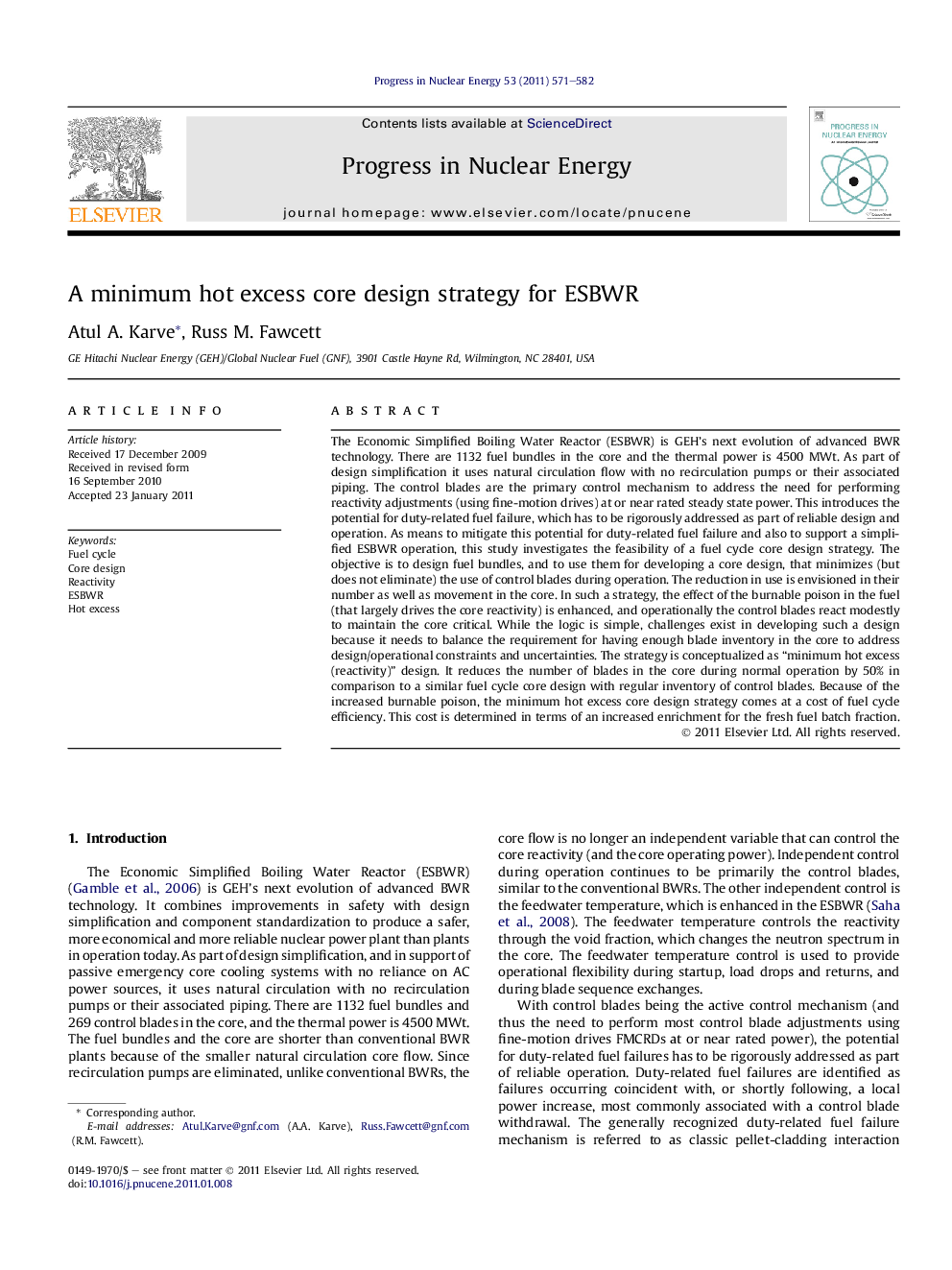| Article ID | Journal | Published Year | Pages | File Type |
|---|---|---|---|---|
| 1740955 | Progress in Nuclear Energy | 2011 | 12 Pages |
The Economic Simplified Boiling Water Reactor (ESBWR) is GEH’s next evolution of advanced BWR technology. There are 1132 fuel bundles in the core and the thermal power is 4500 MWt. As part of design simplification it uses natural circulation flow with no recirculation pumps or their associated piping. The control blades are the primary control mechanism to address the need for performing reactivity adjustments (using fine-motion drives) at or near rated steady state power. This introduces the potential for duty-related fuel failure, which has to be rigorously addressed as part of reliable design and operation. As means to mitigate this potential for duty-related fuel failure and also to support a simplified ESBWR operation, this study investigates the feasibility of a fuel cycle core design strategy. The objective is to design fuel bundles, and to use them for developing a core design, that minimizes (but does not eliminate) the use of control blades during operation. The reduction in use is envisioned in their number as well as movement in the core. In such a strategy, the effect of the burnable poison in the fuel (that largely drives the core reactivity) is enhanced, and operationally the control blades react modestly to maintain the core critical. While the logic is simple, challenges exist in developing such a design because it needs to balance the requirement for having enough blade inventory in the core to address design/operational constraints and uncertainties. The strategy is conceptualized as “minimum hot excess (reactivity)” design. It reduces the number of blades in the core during normal operation by 50% in comparison to a similar fuel cycle core design with regular inventory of control blades. Because of the increased burnable poison, the minimum hot excess core design strategy comes at a cost of fuel cycle efficiency. This cost is determined in terms of an increased enrichment for the fresh fuel batch fraction.
